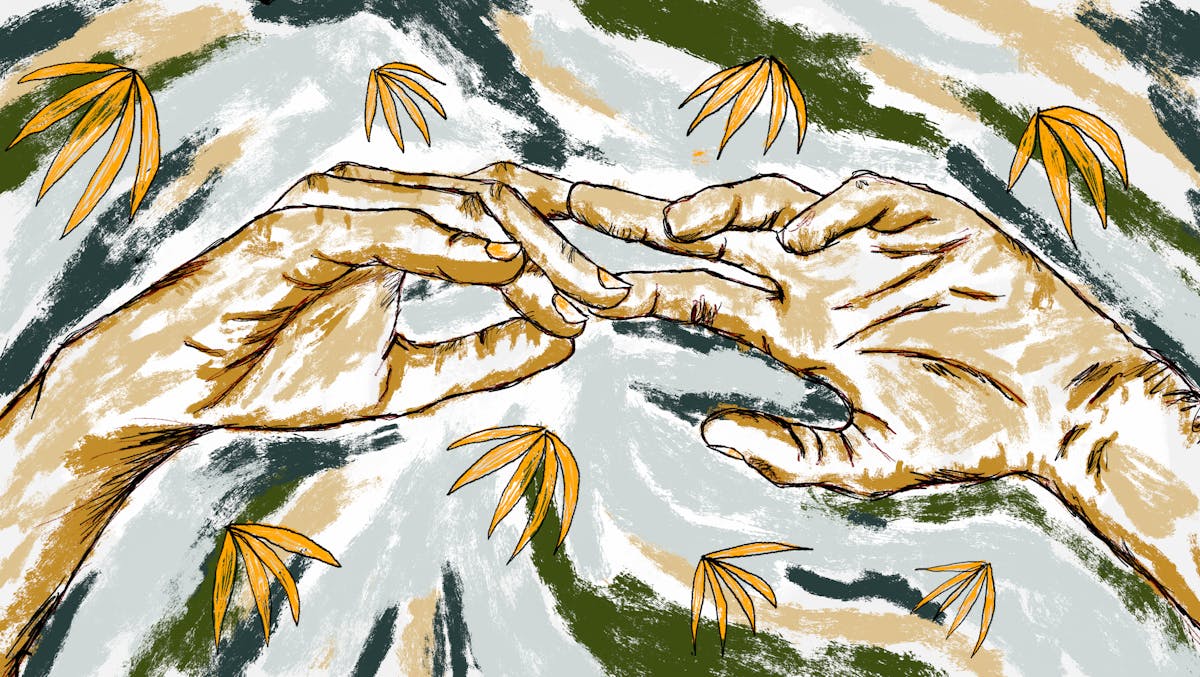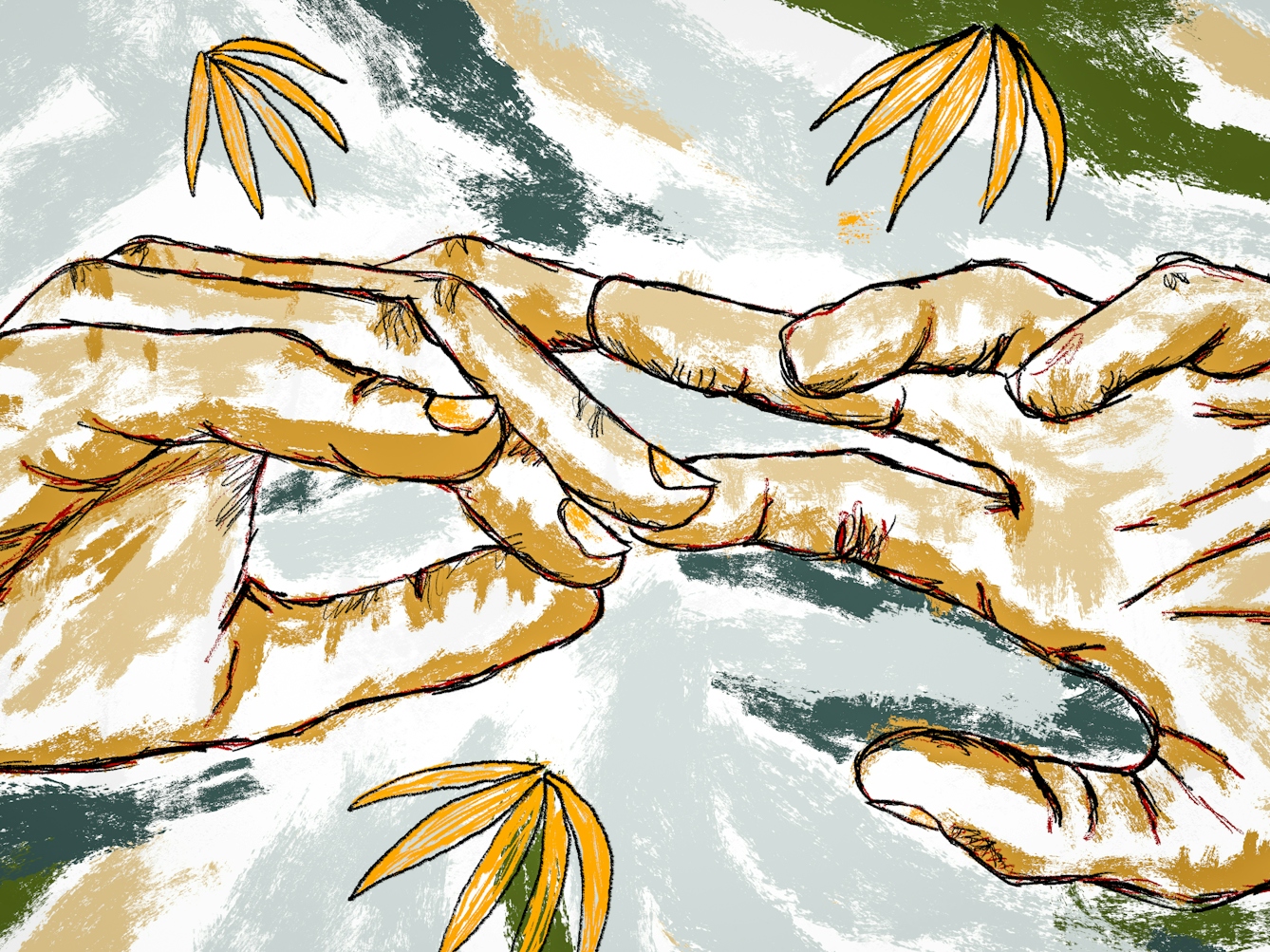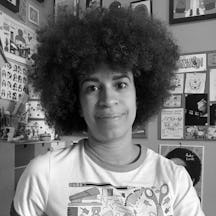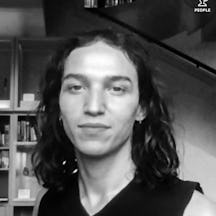For a long time, not feeling sexually attracted to people felt like a problem for Seleena Laverne Daye. Was she broken? She turned 30 feeling like she was somehow failing as an adult. It was time to explore her sexuality and push back against heterosexual norms. Here Seleena explains why claiming her identity as a queer, asexual person of colour has been difficult but liberating. Today she is surviving and thriving in a sex-obsessed world.
Surviving as an asexual person in a heteronormative world
Words by Seleena Laverne Dayeartwork by Nan Carreiraaverage reading time 5 minutes
- Article

I first told a friend I was asexual when I was 16, but then somehow my confidence waned. It took another 15 years before I really delved into what this could mean for me.
In my early 20s, I felt a little broken and lost because it’s intrinsic for all humans to want to be sexual, right? My late 20s were spent feeling envious of friends in relationships. I concluded that a sexual relationship was something I seemingly couldn’t have, while knowing deep down I didn’t actually want one.
As I reached my 30s, this, coupled with the feeling I was failing at being an adult, made me want to explore and take ownership of my sexuality. I had spent years telling myself I was incapable of forming relationships and connecting with others, yet simultaneously I had a strong friendship group that I had spent a lot of time and energy cultivating. Why were my friendships valued differently? It could have been because we didn’t connect on a physical level.
I started to ask – who made these rules?
There are many misconceptions surrounding asexuality. Some believe it’s purely a trauma response, some that it’s a “new thing” or even that it’s made up. Others see it as a choice or refer to it as the “invisible” sexuality.
I just felt different. Different in the way that any kid who doesn’t fit in with society’s inherent belief that being born straight is the default knows they’re different. When I hit my 30s, I gave myself the space to figure things out, to sit with things and discover what it truly meant for me to be asexual.
Reading zines and talking with friends about asexuality helped me to feel comfortable with how I was feeling. Discussions about relationships within the asexual community were really affirming. It was wonderful to find others who felt similarly to me, and to realise that I wasn’t broken or doing something wrong. I was no longer pining after something I never really wanted but had convinced myself I needed to feel whole.
I was starting to realise that it was only in society’s eyes that I was failing.
The narrative sold to us from an early age is that, to feel complete, we must find another person to spend our life with – that our goal is to find our other half. This relationship is often seen to be the most important one in our lives. It acts as a societal gauge for fulfilment, happiness and success. We’re under such pressure to find a ‘significant other’ that we devalue all other relationships.

“It was wonderful to find others who felt similarly to me, and to realise that I wasn’t broken or doing something wrong.”
Embracing my queer identity
Growing up, I had a lingering fear that I was too much, that I would be called out for being an overbearing friend, or for making friends with someone as a ploy to become romantically involved. Out of the handful of friendship break-ups I’ve had, most of them have claimed I had a crush on them, when in fact I just wanted to be a good friend.
Reading about the ways in which you can form meaningful, loving and valued relationships with people who are not romantic or sexual partners has helped me realise I wasn’t too much at all.
Once I started to reclaim my sexuality and learn that there wasn’t anything wrong with me, I started to feel a little freer. Less bound to the heteronormative ideals we are told from a young age to aspire to. That isn’t to say I was carefree with my newfound sense of self – with each new discovery came a sense of existential dread.
I’ve existed in queer spaces since my mid-teens and always felt safe, but often still on the periphery. Even when I entered into a relationship with my partner, who is the same gender as me, and could now be seen as visibly queer, I still felt like a fraud.
I will refer to myself as queer before asexual, but I have this underlying fear of judgement that I’m somehow not queer enough.
Queerness, to me, just means something outside of heteronormativity, so by my own definition, I am queer. Yet I really struggle with calling myself queer. I will refer to myself as queer before asexual, but I have this underlying fear of judgement that I’m somehow not queer enough. Part of this came from a worry I was taking up space meant for others. I now realise, though, it was to do with the fact that I assimilated queerness with whiteness.
Finding a community in spaces full of people who shared the same thoughts and beliefs as me was comforting, but I was acutely aware I was the minority. I was often the only or one of few people of colour (POC) in those spaces.
A lot of the queer media and culture I soaked up in my teens and early 20s was very white: it was as if queer POC didn’t exist. However, I of course came to know they did and always have, it’s just that their stories don’t often get told, or they aren’t given the platforms they deserve.
The more time I spent around queer POC, the easier it was to unlearn the perception of queerness I had been shown most of my life. To settle into my queerness, feel joy, and be happy to take up space.
Most importantly, I’m now happy to just love my friends a little too much.
About the contributors
Seleena Laverne Daye
Seleena Laverne Daye is a Manchester-based maker and doer, making zines and textile art around race, class, sexuality, and 90s pop culture. She also works in retail, facilitates workshops, and spends a lot of time talking about crisps.
Nan Carreira
Nan Carreira is a non-binary artist working primarily with painting, drawing and participative art, with a special focus on queerness. Nan’s work can be seen as a call to imagine new worlds where traits like vulnerability and self-expression are celebrated instead of being punished and repressed.

